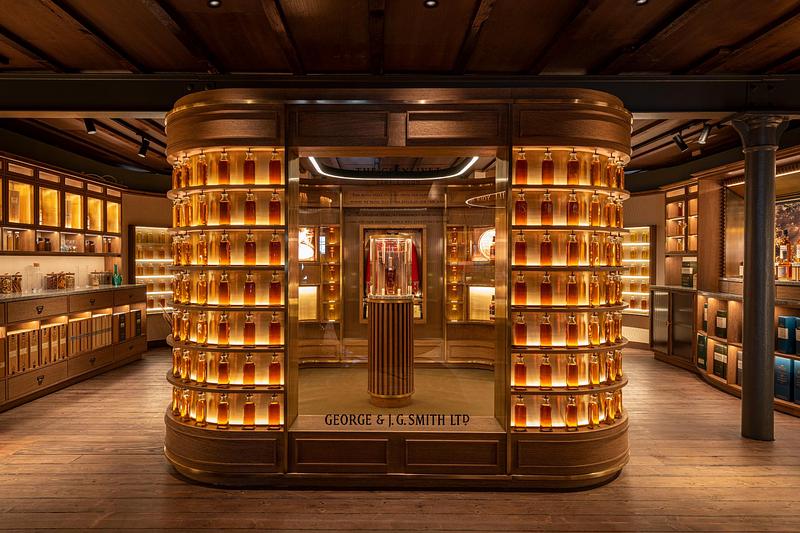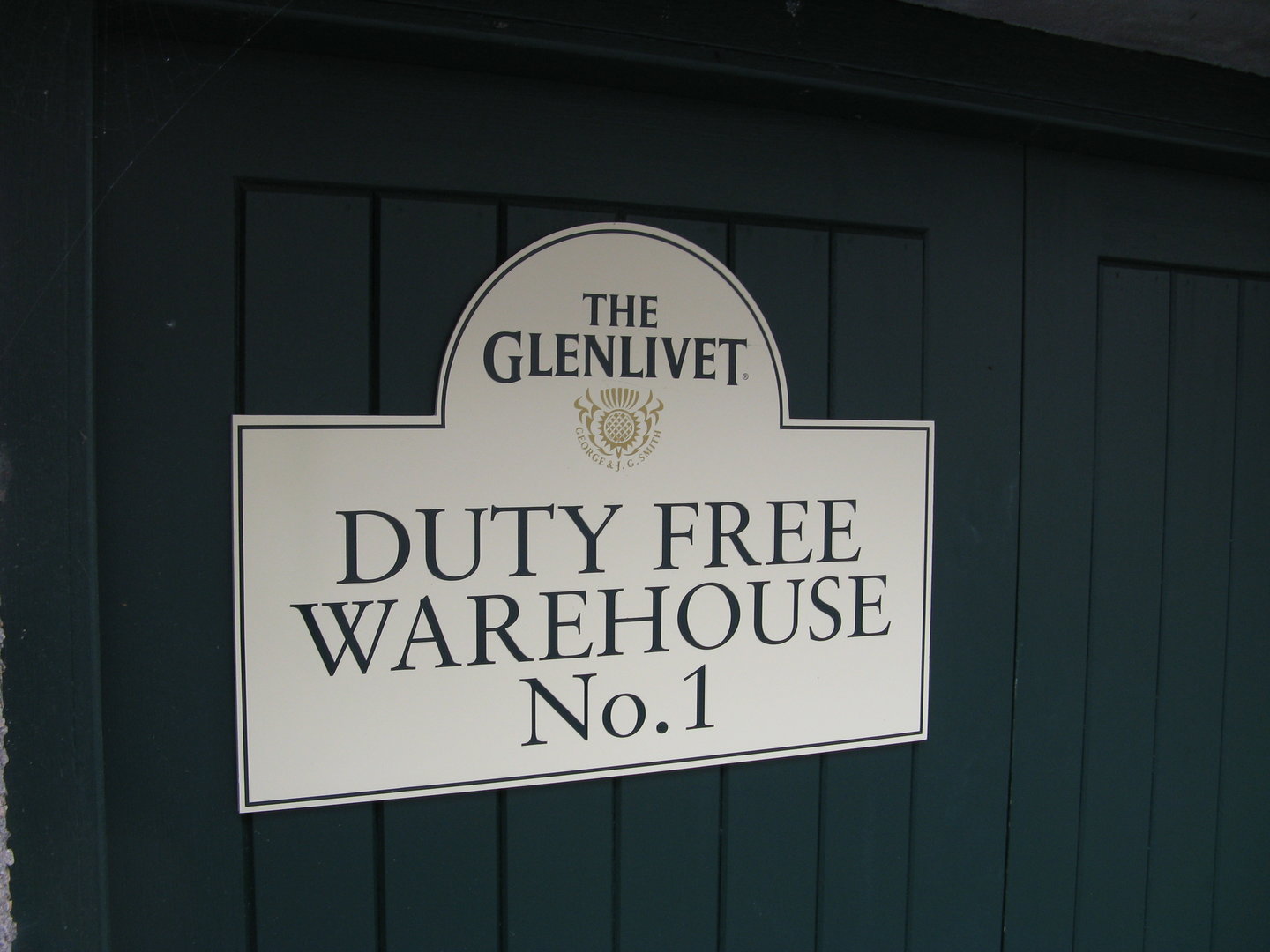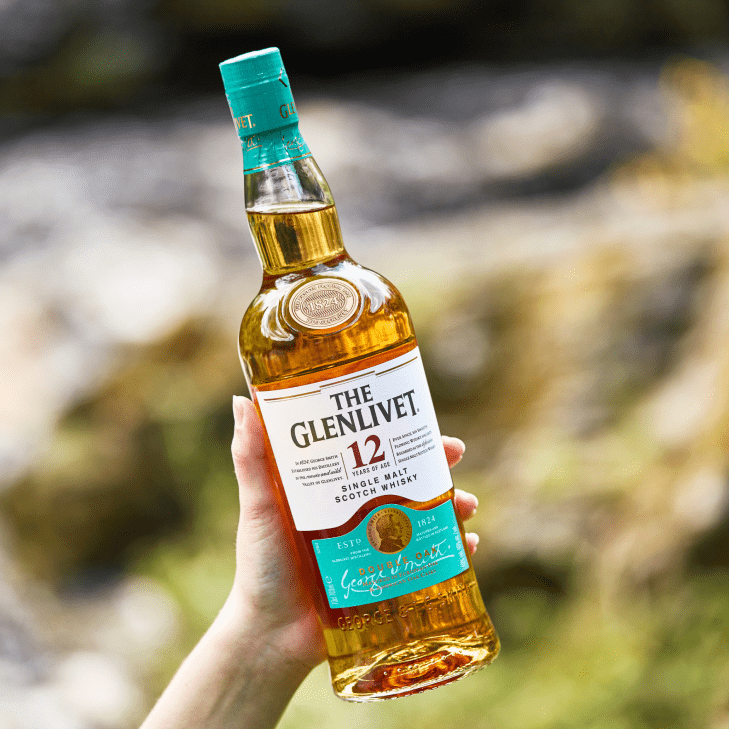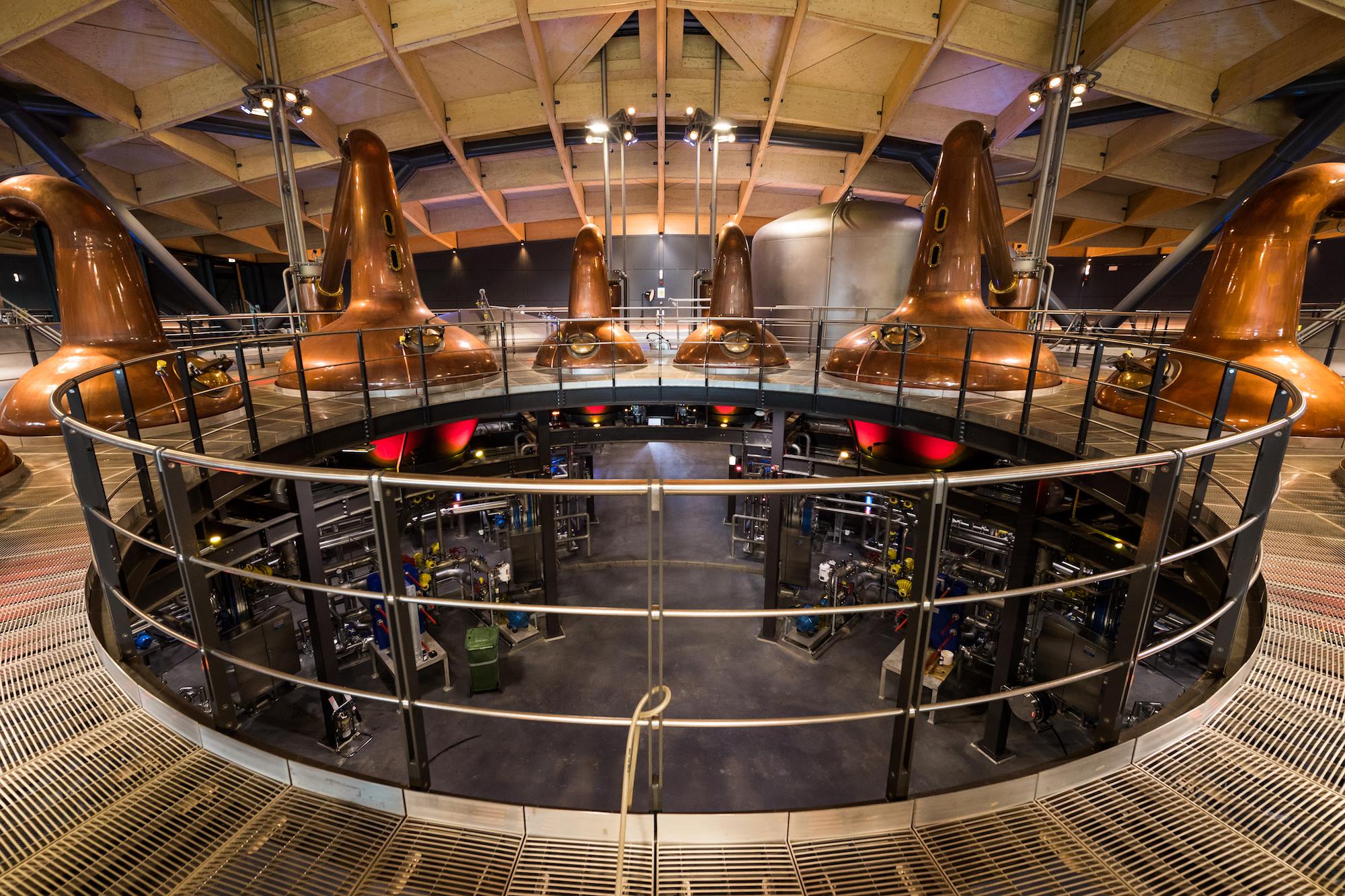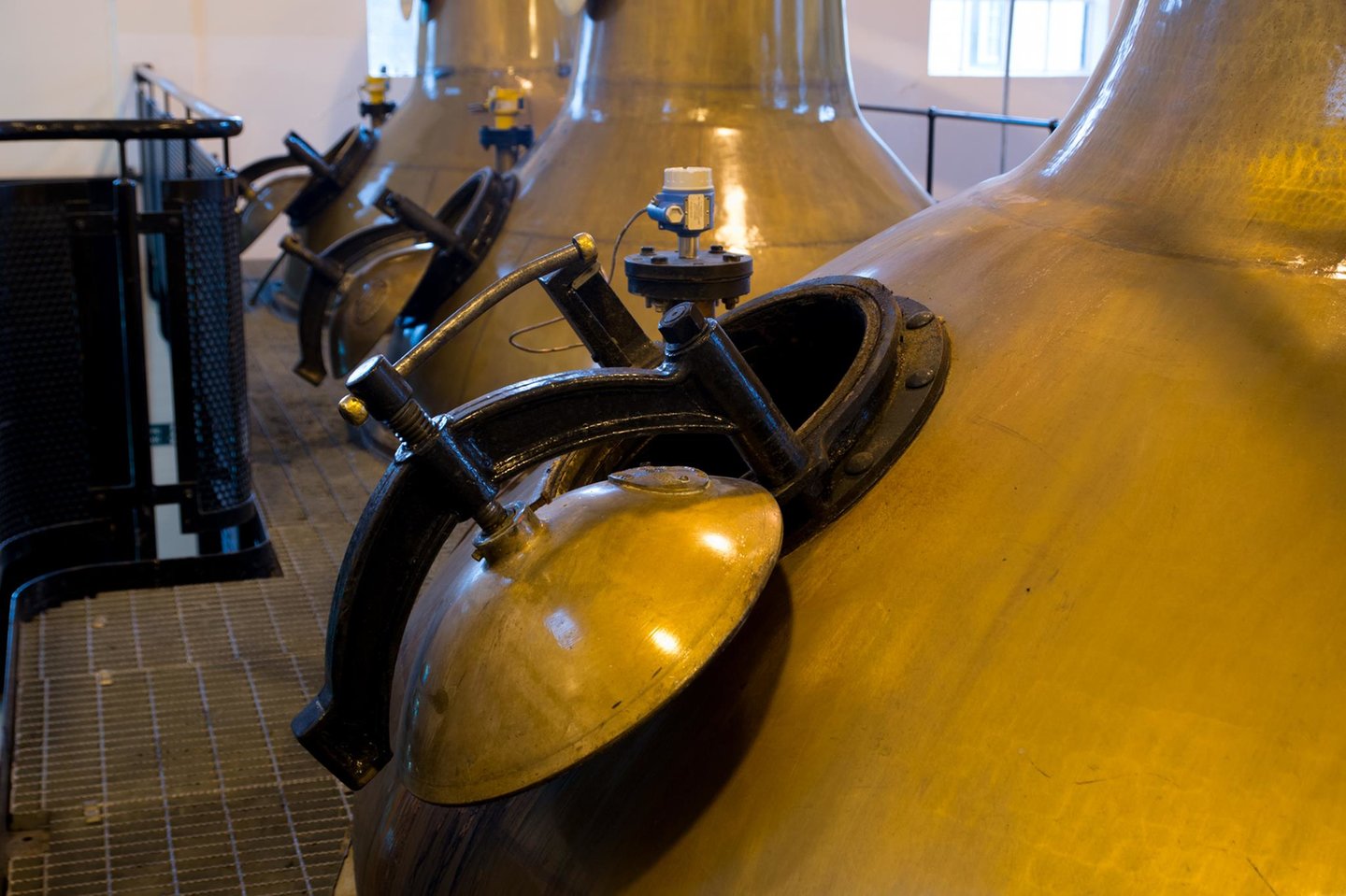The nooks and crannies, valleys and glens of the Scottish Highlands are dotted with distilleries. Around Dufftown, Craigellachie, Rothes, Elgin and Aberlour tall columns pierce the skyline. This is the heart of Scottish whisky country.
CHEERS | Whisky


Spiritual homeland
The verdant green rolling hills of the valley which the river Spey runs through is a special place. It’s the lower northeast corner of the Scottish Highlands and is where almost half of the country’s distilleries can be found. There are two reasons for that, the first being the abundance of water necessary for distilling, and the second harks back to the days of illicit distilling, when stills could be secreted in dark, wooded glens – away from prying eyes and tax collectors.
It was only in 1823 that whisky distilling was legalised with the passing of the Excise Act, and fittingly Glenlivet was one of the first to go the legal route, paying its annual £10 licence fee and writing its way into the history books.
To anyone making an exploratory foray into whisky, or perhaps more specifically into single malts, the Speyside is a good place to start because there are so many options to choose from. And should anyone be lucky enough to travel to the area, they are blessed with fantastic tasting rooms and visitor facilities.
Home of The GLENLIVET, King George IV's favourite tipple.
Whiskies from the Speyside, be they blends or single malts, offer bags of consumer appeal because they are elegant, smooth and effortlessly balanced. They exhibit the typical flavours of vanilla, caramel, fudge, honey and ripe fruit – pears and apricots – with sweet and light floral notes apparent too.
One of the biggest contributors to this gently rich and appealing flavour are the casks that the whiskies are matured in – with many of the distilleries in the area making use of wooden casks previously used in the production of sherry from Spain. This fortified wine imbues the barrels with its rich, slightly nutty, fruity character and since the whisky spirit spends years quietly maturing in warehouses at the various distilleries, it absorbs some of these nuances.
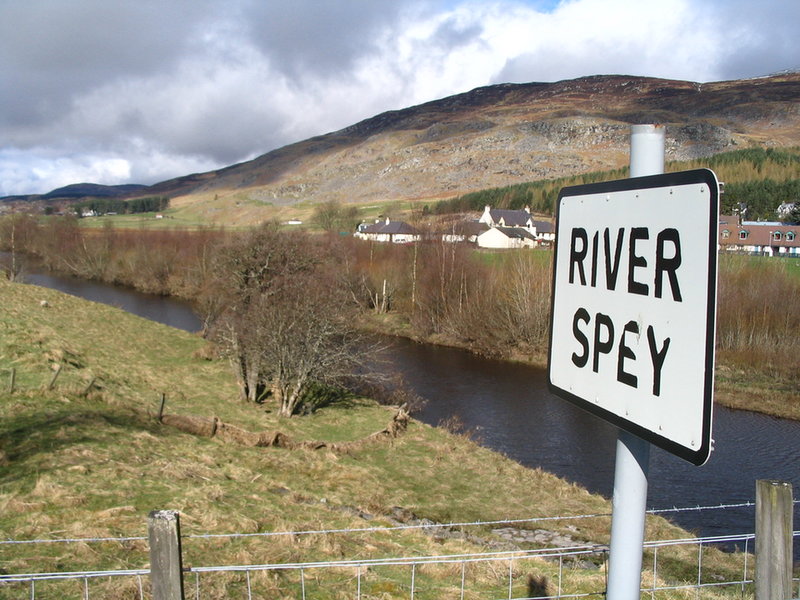
A river runs through it ...
Much of the water used in the distillation of Scotland’s signature spirit – in this Speyside area – is low in dissolved minerals, making it ideal for mashing whisky. It’s been estimated that it takes around 50-litres of water to produce a single litre of whisky, with most of that being used in the still condensers.
It was King George IV’s visit to Edinburgh in 1822 that kindled the interest in this spirit, since he was served a whisky from the Glen Livet in Speyside. It was most certainly an illegal product but the King enjoyed it and asked for supplies to be laid in. At that stage of history, Highland whisky was not generally available beyond the Highlands – so the King’s interest sparked a boom. It became fashionable among the aristocracy to drink the King’s favourite tipple so demand grew – which in turn prompted distilleries to formalise production and go the legal route.
For many years the Glenlivet was one of the most prominent whiskies, at the forefront of commercial production but others swiftly caught up. Nowadays names such as Glenfiddich, The Macallan, Balvenie, Aberlour, Glen Grant and more are instantly recognisable, and all are Speyside products.
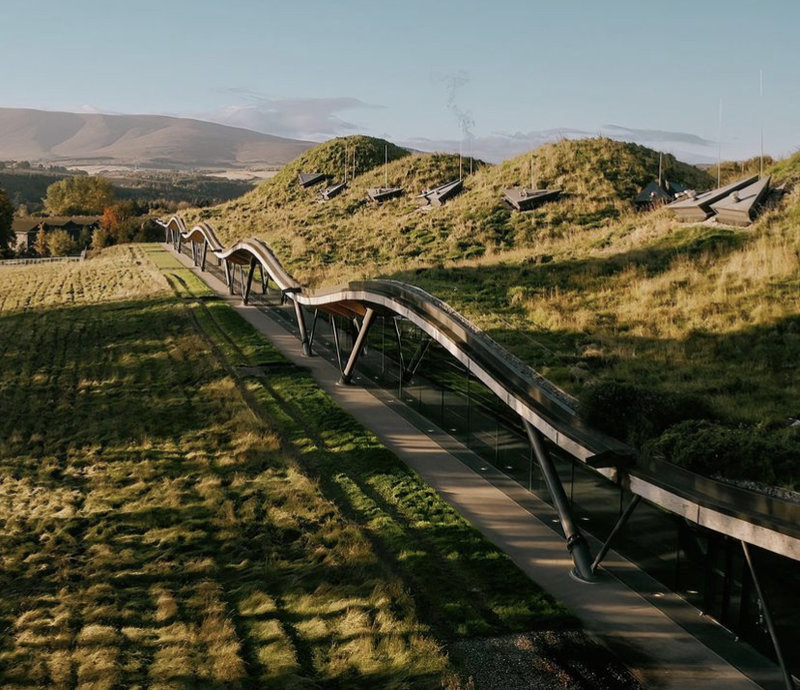
Blending in with the landscape with its living roof and gentle curves is the multi-million pound Macallan distillery
The striding man, Johnnie Walker, with his red, blue, black and green livery? Also a Speyside product with its brand home found at Cardhu distillery, just a few miles from Craigellachie. J&B whisky, the one so intimately associated with a South African metropolitan horse race for so many years? At the heart of that particular blend is whisky from Knockando, close to both Cardhu and the river Spey.
Perhaps the most arresting – visually – is The Macallan. It’s a historic Speyside single malt and 50, 60 and even 70 year plus spirits are infrequently auctioned off for eye-watering prices. In September 2022, for example, Sotheby’s knocked down a single bottle of 81-year-old Macallan The Reach for $340 000 (R5.7 million). (It was a pretty special dram, from a single sherry seasoned cask and bottled in a mouth-blown decanter. It, in turn, was set upon a bronze sculpture of three hands and boxed in a case crafted from a fallen elm tree, thought to have been on the Macallan estate in 1940 – the year the spirit was distilled, the BBC reported at the time.)
In 2012 the Macallan announced a massive distillery revamp on it 370 acre site on the banks of the Spey. It was unveiled to the public in 2018 after six years and is undoubtedly one of the most visually arresting and yet environmentally conscious distilleries in the world. And so it should be since it cost an eye-watering £140 million – or R2.9 billion in today’s money!
Architects ensured it literally blended into the landscape with its rolling grass-covered peaks. Inside, the ceiling is all wood, apparently one of the most complex timber structures in the world with its geodesic structure. Buried in the earth and almost seamlessly melding with the environment, up to 95% of the energy it uses is from renewable sources. No wonder the hybrid Bentley Flying Spur was launched there. And it’s not the only partnership between the two luxury brands. Apparently there’s a Bentley designed bottle of the Macallan being released in 2023 …
And although that’s one brand which occupies the rarified atmosphere which the rich and famous enjoy, there are a host of other malts and blends from the Speyside which every whisky drinker can access. After all, Speyside whiskies are the best-selling and most easily recognisable of all Scotland’s whiskies, barring the peaty Islay examples.

